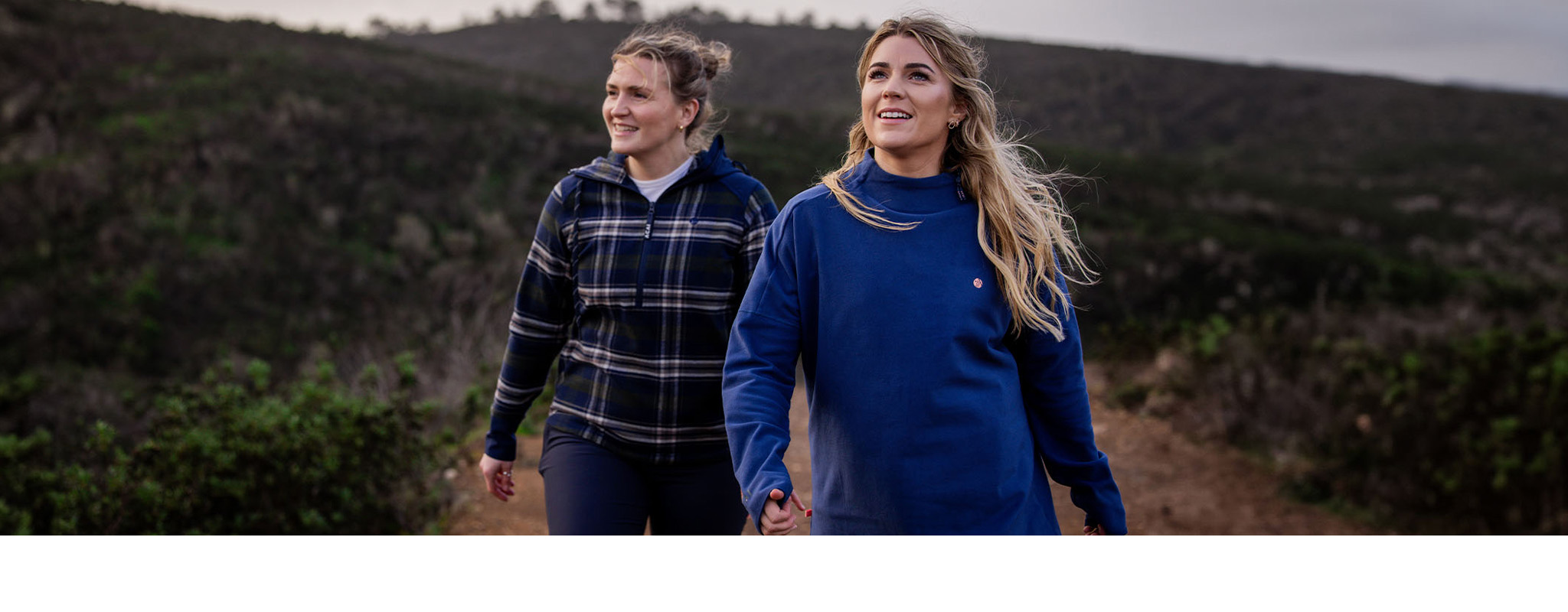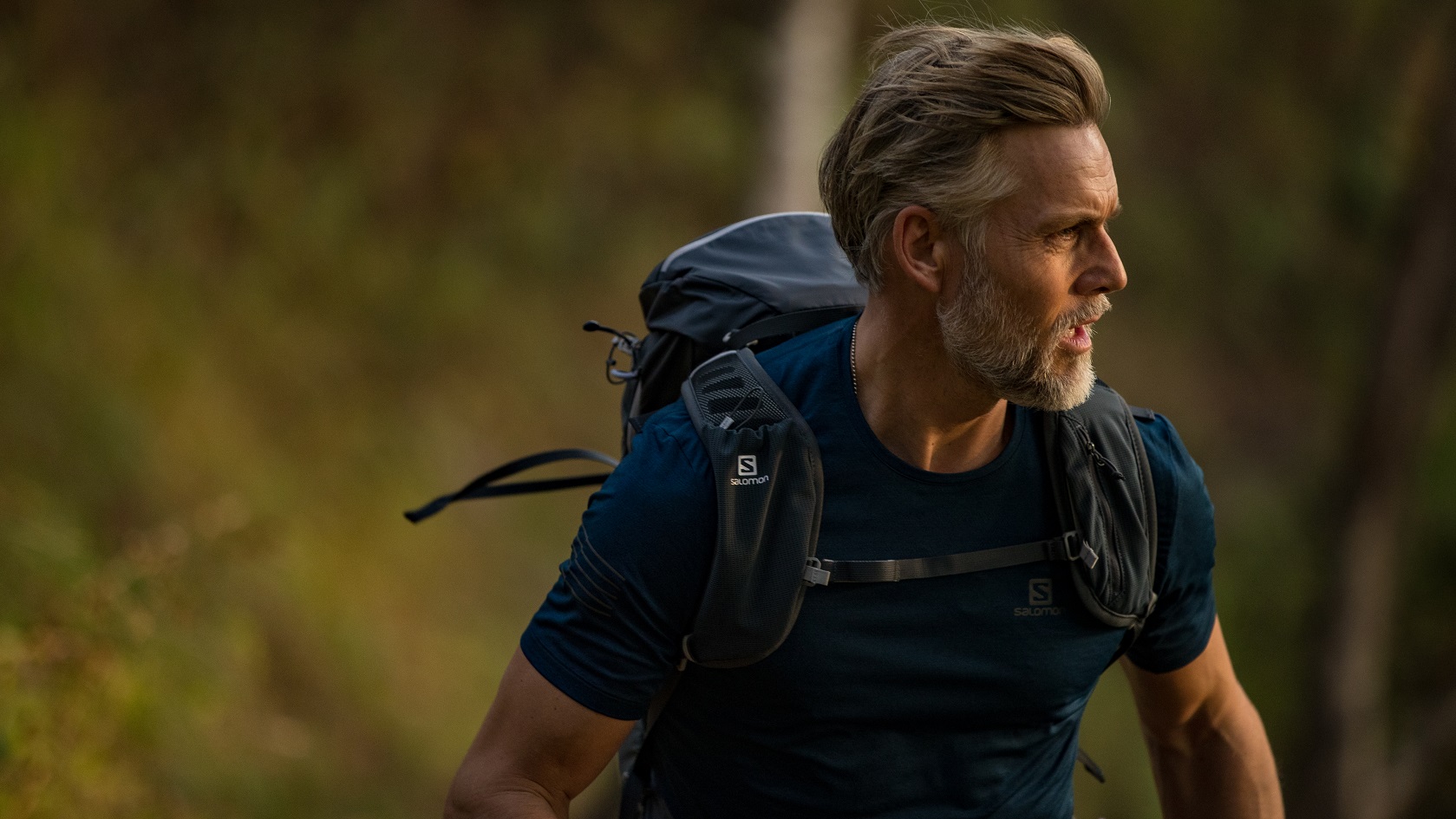Your Guide to the Layering System
For us, adventure has always been about embracing the weather, whatever it throws at us. To ensure you're equipped and protected against the elements wherever you explore this season, you must learn to use the layering system effectively. Layers are essential to keeping you dry, warm, and comfortable in all conditions. The layers you need will depend on your pursuits and the conditions around you - such as waterproof jackets for heavy rainfall and moisture-wicking baselayers for high-exertion mountaineering. Understanding how each layer works independently and as part of a well-executed layering system will help ensure you equip the correct layers for your adventure.
As the name suggests, base layers are your first layer, to be worn next to the skin. The main purpose of a base layer is to regulate your body temperature by retaining heat and wicking away moisture - to keep you comfortable and warm in adverse conditions.
Many base layers are made from Merino wool. A highly effective material across a range of temperatures and activities, Merino Wool has insulating properties and excellent moisture wicking, as well as being antimicrobial, which means it needs to be washed far less often. This versatility makes Merino Wool base layers a reliable choice for most outdoor activities. In addition, many base layers are made from synthetic materials such as polyester and polypropylene. Synthetic base layers are ideal for high-intensity activities like running, climbing, and fast hiking as they are quick-drying in hot and cold conditions.
Sometimes referred to as 'the insulation layer', mid-layers provide your body with extra warmth when and where you need it. Mid-layers usually appear as a fleece, pullover, or as a down or synthetic insulated jacket. Like base layers, a mid-layer should always be highly breathable and able to retain heat to regulate your body temperature. In milder conditions, you may not need anything on top of your mid-layer, but in adverse weather conditions, an outer waterproof or windproof shell is necessary.
Fleeces are an ideal choice for hiking. Available in a selection of thicknesses, they are usually quick-drying and breathable, offering warmth by retaining heat and removing moisture. The most important consideration is choosing the right level of warmth to suit your activity and weather conditions. As a rule, it's best to avoid cotton mid-layers as these are more likely to retain moisture that can lead to you getting cold.
For climbing and mountaineering in colder climates, we have a range of down and synthetic insulated jackets. Insulated jackets are highly packable with an excellent warmth-to-weight ratio, whereas synthetic insulated jackets retain more heat, even when wet.
Outer Layers:
Reliable weather protectionYour outer layer is your protection from the elements - wind, rain, snow, and everything in between. A good outer layer will protect you against wind and rain, while also allowing the moisture and heat from your body to escape so you don’t overheat during high-exertion activities. You need to ensure you pick the right outer layer for your activity. Here are all the different outer layers you can choose from:
The waterproof hard shell is the classic outer layer that defends against the most adverse conditions. Features of these jackets include taped seams and suitably weatherproof zips to ensure rain stays outside, not inside. Durable Water-repellent (DWR) coated hard shells can also work well as a lighter outer layer in warm conditions for low-intensity activities.
Depending on weather conditions, your outer layer may not necessarily need to be fully waterproof. In this instance, Soft Shell Jackets offer a fantastic alternative with excellent comfort, stretch, flexibility, and wind resistance and are more breathable than waterproof hard shells. In cool conditions, soft shells can also work as an excellent alternative mid-layer, especially when paired with a waterproof hard shell on top.
In icy cold conditions, an insulated, synthetic, or down jacket is a highly effective outer layer to keep you warm. However, having a waterproof outer layer to hand is still important if there’s any chance of rain or snow.
Examples Of When To Use Your Layers...
A walk on a warm, dry day
You won't need to layer up on days like this. Simply wear a moisture-wicking base layer to help your sweat evaporate and keep you cool.
A hilly walk on a warm but rainy day
Wear a comfortable moisture-wicking base layer and pack a second layer with you to protect you from potential adverse weather. Choose a soft shell to protect you from the wind as you ascend, or a waterproof hard shell jacket for when the rain comes in.
A hilly or mountain hike on a cold/rainy/windy day
This is where you will need to pack and use all three layering pieces. Start with a moisture-wicking base layer next to the skin. Second, add your insulating mid-layer for warmth (in colder temperatures, this should be a synthetic fill or a down jacket if there's no chance of rain.) Finally, add a breathable, waterproof outer shell to protect yourself (and your mid-layer) from the rain and snow.
Related articles

Let us know you agree to cookies
We use marketing, analytical and functional cookies as well as similar technologies to give you the best experience. Third parties, including social media platforms, often place tracking cookies on our site to show you personalised adverts outside of our website.
We store your cookie preferences for two years and you can edit your preferences via ‘manage cookies’ or through the cookie policy at the bottom of every page. For more information, please see our cookie policy.








